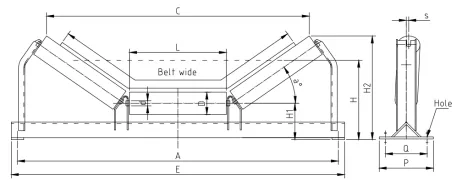 Afrikaans
Afrikaans  Albanian
Albanian  Amharic
Amharic  Arabic
Arabic  Armenian
Armenian  Azerbaijani
Azerbaijani  Basque
Basque  Belarusian
Belarusian  Bengali
Bengali  Bosnian
Bosnian  Bulgarian
Bulgarian  Catalan
Catalan  Cebuano
Cebuano  Corsican
Corsican  Croatian
Croatian  Czech
Czech  Danish
Danish  Dutch
Dutch  English
English  Esperanto
Esperanto  Estonian
Estonian  Finnish
Finnish  French
French  Frisian
Frisian  Galician
Galician  Georgian
Georgian  German
German  Greek
Greek  Gujarati
Gujarati  Haitian Creole
Haitian Creole  hausa
hausa  hawaiian
hawaiian  Hebrew
Hebrew  Hindi
Hindi  Miao
Miao  Hungarian
Hungarian  Icelandic
Icelandic  igbo
igbo  Indonesian
Indonesian  irish
irish  Italian
Italian  Japanese
Japanese  Javanese
Javanese  Kannada
Kannada  kazakh
kazakh  Khmer
Khmer  Rwandese
Rwandese  Korean
Korean  Kurdish
Kurdish  Kyrgyz
Kyrgyz  Lao
Lao  Latin
Latin  Latvian
Latvian  Lithuanian
Lithuanian  Luxembourgish
Luxembourgish  Macedonian
Macedonian  Malgashi
Malgashi  Malay
Malay  Malayalam
Malayalam  Maltese
Maltese  Maori
Maori  Marathi
Marathi  Mongolian
Mongolian  Myanmar
Myanmar  Nepali
Nepali  Norwegian
Norwegian  Norwegian
Norwegian  Occitan
Occitan  Pashto
Pashto  Persian
Persian  Polish
Polish  Portuguese
Portuguese  Punjabi
Punjabi  Romanian
Romanian  Russian
Russian  Samoan
Samoan  Scottish Gaelic
Scottish Gaelic  Serbian
Serbian  Sesotho
Sesotho  Shona
Shona  Sindhi
Sindhi  Sinhala
Sinhala  Slovak
Slovak  Slovenian
Slovenian  Somali
Somali  Spanish
Spanish  Sundanese
Sundanese  Swahili
Swahili  Swedish
Swedish  Tagalog
Tagalog  Tajik
Tajik  Tamil
Tamil  Tatar
Tatar  Telugu
Telugu  Thai
Thai  Turkish
Turkish  Turkmen
Turkmen  Ukrainian
Ukrainian  Urdu
Urdu  Uighur
Uighur  Uzbek
Uzbek  Vietnamese
Vietnamese  Welsh
Welsh  Bantu
Bantu  Yiddish
Yiddish  Yoruba
Yoruba  Zulu
Zulu Understanding Conveyor Roller Idlers and Their Role in Industrial Material Handling Systems
Understanding Conveyor Roller Idlers A Key Component in Material Handling Systems
Conveyor roller idlers play a crucial role in the efficient operation of material handling systems across various industries. These components are essential for supporting and guiding the conveyor belts that transport goods and materials, ensuring that the entire system functions smoothly and effectively. This article will delve into the significance, types, features, and maintenance of conveyor roller idlers.
What are Conveyor Roller Idlers?
Conveyor roller idlers are cylindrical components that are mounted on frames to support the conveyor belt. They serve as a means of reducing friction between the belt and the materials being transported, allowing for a more efficient flow. Idlers are strategically placed at different intervals along the conveyor, with the primary purpose of maintaining belt alignment and providing stability during operation.
Types of Conveyor Roller Idlers
There are several types of conveyor roller idlers, each designed for specific applications
1. Carrier Idlers These are the most common type of idlers, used to support the weight of the conveyor belt and the material being transported. They can be flat or crowned, with the crowned design helping to keep the belt centered.
3. Impact Idlers These idlers are located in areas where materials are loaded onto the conveyor. They are designed to absorb the impact of the falling material, thus protecting the belt and the structure of the conveyor system.
4. Guide Idlers These are used to help maintain the alignment of the conveyor belt and prevent it from drifting off course.
Features and Materials
conveyor roller idler

Conveyor roller idlers come in various sizes and designs to accommodate different belt widths and operational requirements. Common features include
- Durability Idlers are often made from high-grade materials such as steel or reinforced plastic to ensure they withstand heavy loads and abrasive materials.
- Bearings The quality of bearings used in idlers is crucial, as they affect the idler's performance, longevity, and maintenance needs. Sealed bearings are preferable as they protect against dirt and moisture.
- Coatings Many idlers are coated to resist corrosion and other environmental factors, prolonging their lifespan.
Importance of Maintenance
Regular maintenance of conveyor roller idlers is vital for ensuring the overall efficiency and longevity of the conveyor system. Here are some key maintenance practices
- Inspection Routine checks for wear and tear, such as belt misalignment, bearing condition, and structural integrity, can prevent unforeseen breakdowns.
- Cleaning Keeping the idlers free of debris and material accumulation is essential to avoid added weight and friction that could lead to excessive wear.
- Lubrication Regularly lubricating the bearings can significantly enhance their performance and lifespan.
Conclusion
In summary, conveyor roller idlers are pivotal in the successful functioning of material handling systems. Their ability to support the conveyor belt, reduce friction, and maintain alignment ensures the efficient transport of materials across various industries. By understanding the types, features, and necessary maintenance of these components, companies can optimize performance and reduce downtimes, ultimately leading to increased productivity and cost savings. Regular attention to idler condition is a small investment that pays off by prolonging the life of the conveyor system and increasing operational efficiency.
-
Revolutionizing Conveyor Reliability with Advanced Rubber Lagging PulleysNewsJul.22,2025
-
Powering Precision and Durability with Expert Manufacturers of Conveyor ComponentsNewsJul.22,2025
-
Optimizing Conveyor Systems with Advanced Conveyor AccessoriesNewsJul.22,2025
-
Maximize Conveyor Efficiency with Quality Conveyor Idler PulleysNewsJul.22,2025
-
Future-Proof Your Conveyor System with High-Performance Polyurethane RollerNewsJul.22,2025
-
Driving Efficiency Forward with Quality Idlers and RollersNewsJul.22,2025





























